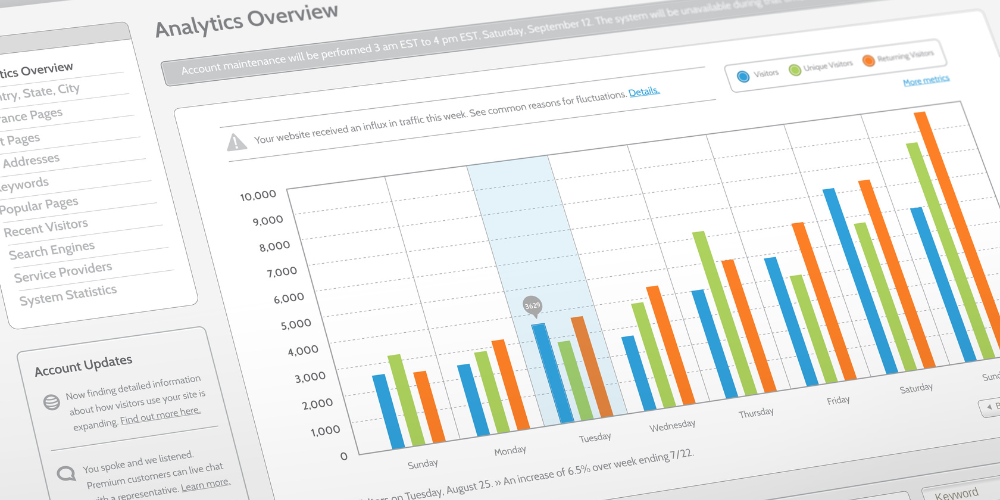Advanced Segmentation in Google Analytics: Unlocking Deeper Insights
Did you know that marketers who use advanced segmentation in Google Analytics are 2.3x more likely to exceed their revenue goals? (Source: HubSpot)
Most businesses only look at surface-level metrics like total sessions or bounce rate. But the real power of Google Analytics lies in segmenting your data—breaking it down into meaningful groups to uncover hidden trends, optimize campaigns, and personalize user experiences.
In this guide, you’ll learn:
✅ What advanced segmentation is (and why it matters)
✅ 7 powerful segmentation strategies
✅ How to create custom segments in GA4
✅ Real-world examples of segmentation driving results
Let’s dive in.
What Is Advanced Segmentation in Google Analytics?
Advanced segmentation allows you to isolate specific groups of users based on:
- Demographics (age, gender, location)
- Behavior (pages visited, time on site)
- Traffic source (organic, paid, social)
- Device type (mobile, desktop, tablet)
- Conversion history (buyers vs. non-buyers)
Why It Matters
- Personalize marketing(e.g., show different ads to first-time visitors vs. returning customers)
- Fix leaks in your funnel(e.g., why mobile users drop off at checkout)
- Optimize ad spend(e.g., which traffic sources drive the highest-value users)
7 Advanced Segmentation Strategies You Should Use
#1: High-Value Customer Segmentation
Goal: Identify users who generate the most revenue.
How to Segment:
- Users with 2+ purchases
- Sessions with revenue > $100
- Repeat buyers(vs. one-time purchasers)
Use Case:
Retarget these users with loyalty offers or exclusive deals.
#2: Behavioral Segmentation (Engagement-Based)
Goal: Find engaged users who are more likely to convert.
How to Segment:
- Users who visited 3+ pages
- Sessions with 10+ minutes engagement
- Users who watched 50% of a video
Use Case:
Push these users down the funnel with targeted CTAs.
#3: Traffic Source Segmentation
Goal: Compare performance across channels.
How to Segment:
- Organic searchpaid ads
- Social media traffic(Facebook vs. LinkedIn)
- Email campaign clicks
Use Case:
Double down on the highest-converting traffic sources.
#4: Mobile vs. Desktop Performance
Goal: Optimize UX for different devices.
How to Segment:
- Mobile users(check for high bounce rates)
- Desktop users(compare conversion rates)
Use Case:
If mobile conversions are low, test a simplified checkout flow.
#5: Geographic Segmentation
Goal: Localize marketing efforts.
How to Segment:
- Users from specific countries/cities
- Compare urban vs. ruralengagement
Use Case:
Run location-specific promotions or ad campaigns.
#6: Cohort Analysis (User Retention)
Goal: Track how user behavior changes over time.
How to Segment:
- New users (7-day retention)
- Repeat visitors (30-day window)
Use Case:
Identify if your content keeps users coming back.
#7: Funnel Drop-Off Segmentation
Goal: Find where users abandon your conversion path.
How to Segment:
- Users who added to cart but didn’t check out
- Visitors who saw pricing but didn’t sign up
Use Case:
A/B test different CTAs or reduce friction at drop-off points.
How to Create Custom Segments in GA4
Step 1: Navigate to Explorations
- Go to GA4 > Explore(left sidebar)
Step 2: Choose a Template or Blank Report
- Use “Segment Overlap”or “Funnel Exploration” for deeper analysis
Step 3: Build Your Segment
- Click “+” under Segments
- Select conditions (e.g., “Country = United States,” “Device = Mobile”)
Step 4: Save & Apply
- Name your segment (e.g., “High-Value Mobile Users”)
- Apply it to reports for ongoing tracking
Real-World Examples of Segmentation Driving Results
Case Study 1: E-Commerce Store Increases Revenue by 34%
- Problem:Low conversion rates from mobile users
- Solution:Created a “Mobile Cart Abandoners” segment
- Action:Sent SMS reminders with a 10% discount
- Result:34% more mobile conversions
Case Study 2: SaaS Company Reduces Churn by 22%
- Problem:High churn after free trial
- Solution:Segmented users who didn’t use key features
- Action:Sent personalized onboarding emails
- Result:22% fewer cancellations
Common Segmentation Mistakes to Avoid
❌ Over-segmenting (too many segments = analysis paralysis)
❌ Ignoring small but high-intent segments (e.g., users who read pricing but didn’t convert)
❌ Not updating segments (user behavior changes over time)
Start Segmenting Today
Advanced segmentation turns raw data into actionable insights. Instead of guessing, you can:
✔️ Personalize marketing for different audiences
✔️ Fix UX issues hurting conversions
✔️ Optimize budgets based on real performance




